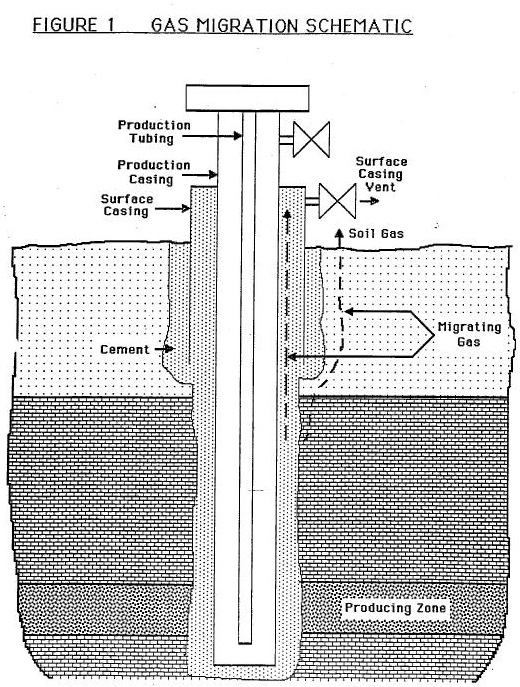Investigators suspect methane leak in Signal Hill house explosion, fire official says by Valerie Osier, November 20, 2020, Long Beach Post News
Investigators are still working to determine the cause of the explosion that destroyed an Ohio Avenue home in Signal Hill, but they suspect it might be a methane leak, according to a Los Angeles County Fire Department official.
The explosion rocked the neighborhood the evening of Nov. 5. It blew out every window of the home where it happened, cracked the structure and virtually gutted it. The two people inside both narrowly escaped with minor injuries, according to the homeowner. The house next door was also severely damaged by the blast, which authorities initially attributed to a natural gas explosion.
On Friday, Capt. Steve Sparks, from the Los Angeles County Fire Department arson unit, said the house is still red-tagged, meaning it’s uninhabitable and dangerous to be inside, so the investigation is limited so far.
“We only got about 15 minutes at the residence before the readings were so high that it was unsafe and we had to close it back up,” Sparks said.
While investigators think it’s a methane leak, no one has confirmed that or determined a possible source of the gas, he said. His team is waiting for it to be safe to conduct an investigation at the home, but it’s not clear how long it will take for the methane to dissipate, especially if they don’t know where it’s coming from. The county hazardous materials team is also investigating.
Sparks’ team also checked nearby homes for methane and found the readings there were at zero, he said.
The methane could be from abandoned oil wells under the home or nearby oil fields, Sparks said, but he noted that with new building codes, there’s less of a chance there is an oil well underneath the home. The house sits across from an oil field with active and inactive oil wells leased by Signal Hill Petroleum, Shell and other individuals, according to the California Geologic Energy Management Division.
The homeowner, Kumar Barot, said that he and his family had smelled something like gas or oil for months before the explosion and called Signal Hill Petroleum and the gas department in Long Beach to investigate. They both came out two weeks prior to the blast but couldn’t find the source of the problem.
Methane by itself is odorless, but depending on the amount and what it’s mixed with, it can smell like sewer gas or natural gas. In large quantities, methane is highly flammable and anything from static electricity to a stove to a water-heater pilot light could’ve triggered the explosion, Sparks said.
The day after the explosion, workers from Signal Hill Petroleum were taking readings of naturally occurring gas under the street.
“They got mixed readings, but nothing catastrophic at that point,” spokeswoman Alex Rothwell said.
The company is cooperating with all the agencies that are investigating, which include the Long Beach gas department, the county, the city of Signal Hill and insurance companies. Rothwell said she did not immediately have much information to share about the investigation because other agencies are taking the lead.
A spokesperson for the city of Signal Hill could not be reached Friday, as they are furloughed.

Refer also to (just a tiny sampling, lots more deadly destructive oil & gas industry leaking methane mishaps):








The companies were ordered to fix the leaks, they tried, all failed – groundwater was contaminated with dangerous levels of methane, nature – of course – was blamed.


2014 08: Gas Minister’s Leaky Well Comments ‘Ignorant,’ Scientist Says
Cornell engineer takes issue with Coleman’s claim that BC is leak-free
2014 06: Canada’s 500,000 Leaky Energy Wells: ‘Threat to Public’
Badly sealed oil and gas wellbores leak emissions barely monitored, experts find
Five ways gas wellbores can leak. Source: “Towards a Road Map for Mitigating the Rates and Occurrences of Long-Term Wellbore Leakage.”
2014 06: Abandoned Oil Wells Spouting Significant Levels of Methane: Study
Princeton researcher measures leaks that risk groundwater, and increasingly the climate
2012:

Muehlenbachs, who has been fingerprinting leaking gases since 1994, says that hydraulic fracking, which injects water, chemicals and sand into rock formations at high pressures, may create more leaks in wellbores overtime. (As industry searches for deeper and more extreme hydrocarbons, it must blast open tight rocks with more brute force over larger land bases than conventional operations.)
“They’ll frack each well up to 20 times. Each time the pressure will shudder and bang the pipes in the wellbore. The cement is hard and the steel is soft. If you do it all the time you are going to break bonds and cause leaks. It’s a real major issue. “ …
Asked if Alberta’s oil patch regulator or B.C.’s Oil and Gas Commission had approached one of the world’s leading experts on how to fingerprint leaking gases from gas formations, Muehlenbachs replied quickly.
“No,” said Muehlenbachs. “No one pays any attention to me. The Alberta regulators are only interested in optimizing production.”
2011 07: Calmar residents know the drill as company works to cap abandoned well
2011 04: Calmar Homeowners Suing Town of Calmar and Aztec Home Sales Inc over Leaking Wells
2011 04: Imperial Oil leaking natural gas wells a nightmare for homeowners near Edmonton
2010 10: Leaking gas well forces families out in Calmar neighbourhood
2006 05: Bruce Jack Private water well explosion at Spirit River, Alberta
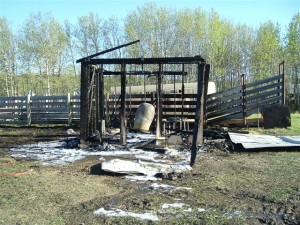


2006: Ernst’s drinking water after Encana/Ovintiv illegally frac’d the aquifers that supply her well (even after Bruce Jack and two industry gas in water testers were seriously injured and hospitalized from industry’s leaking methane in Jack’s well water exploding, Alberta authorities told Ernst and her neighbours their dangerously contaminated water was safe to live with. Cases closed, no help provided, the end.)
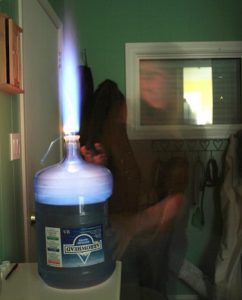
2005 01: Investigators say an accumulation of gases appears to have caused the explosion that destroyed the Rosebud water tower and sent a Wheatland County employee to hospital after Encana illegally frac’d the community’s drinking water aquifers. The community had to pay nearly $700,000.00 for a new water reservoir. Encana kept frac’ing in fresh water zones on endless more gas wells, raping out profits, lying, lying some more, and 14 years later changed its dirty name to Ovintiv to run away chicken shit to the USA.
2005 01: EnCana Corporation Site Investigation Report by Hydrogeological Consultants Ltd.
The 2005 report by HCL (scan of a large file, takes time to load) shows Encana injected 18 million litres of nitrogen based frac fluid directly into Rosebud’s drinking water aquifers. In total, more than 70 million litres were injected into Encana’s 5-14 gas well under high pressure.
After data collected by HCL indicated Encana had contaminated Rosebud area water wells, Encana cemented shut the 5-14 well shut (apparently to prevent data collection on the illegal gas well), which made the nitrogen and methane migration problem much worse.
On Page 22 of their report, HCL dismissed the high nitrogen levels in Rosebud drinking water, by claiming it “is similar to the nitrogen concentration of a gas sample from a water well completed in the upper part of the Horseshoe Canyon Formation southwest of Calmar, Alberta.”
2004 The truth starts coming out:

2002: More damning industry research kept from the public:
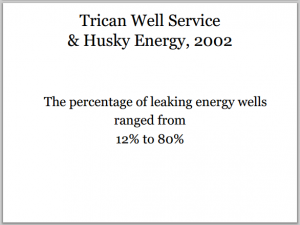
2001 Industry’s leaked gas in Kansas that killed two people in their home:


1995 & 1996: Industry and CAPP kept this vital research secret. A decade later, Ernst found and bought the report from CAPP, for $88.00. It was confidential report, Ernst made it public. We have a right to know we are living in risk of blowing up in our own homes, and from our own drinking water because of industry’s greedy shoddy work practices, leaks, law violations, pollution, secrets and lies.

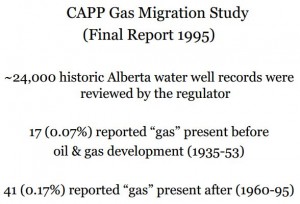
1993 Husky Oil’s Gas Migration Research Update (Husky kept their research from the public too)


Setting nature up to take the blame.
1985 03 25: Gas Explosion Shatters Fairfax Store; 23 Hurt






1985 03 24: California: Ross Dress for Less Explodes
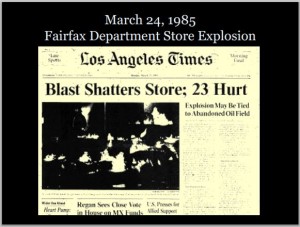
Slides from Ernst presentations




